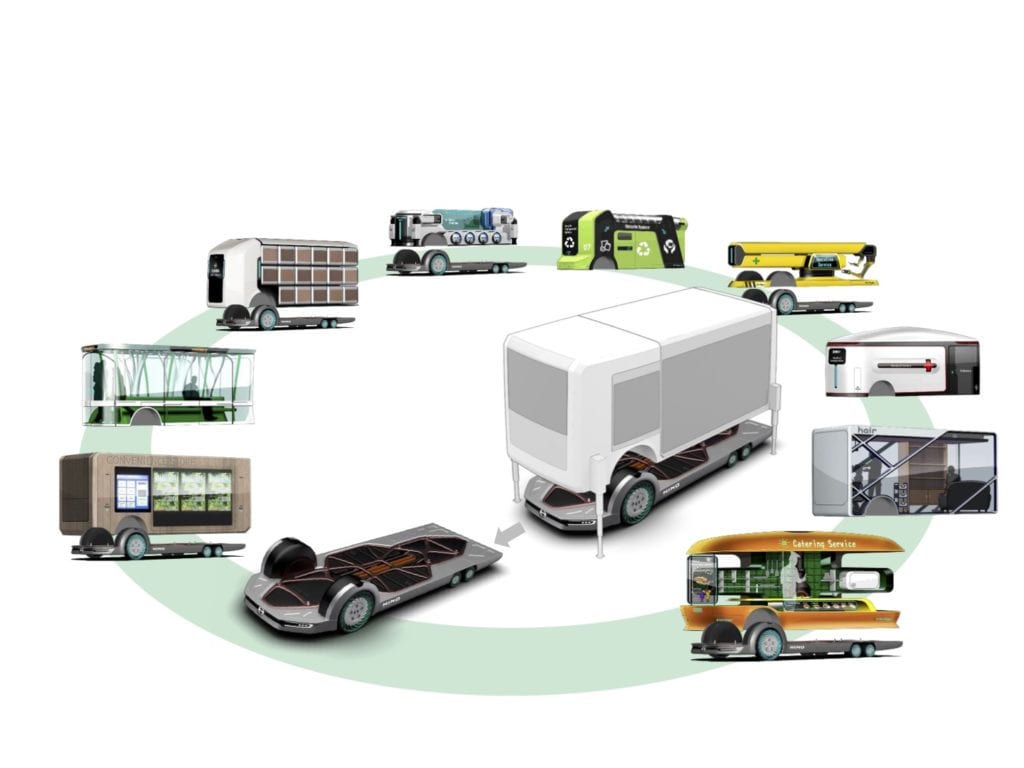Reading Time: 4 minutes
REE Automotive is on a roll. In recent months it’s unveiled two major partnerships and the establishment of an Engineering Center of Excellence in the UK. As if these announcements weren’t enough for the Israeli e-mobility start-up, it’s also aiming to list on the NASDAQ through a merger. The stories just keep on coming.
Daniel Barel is REE Automotive’s CEO. He’s been talking to Auto Futures.
REE’s proprietary REEcorner technology is radical. It packs vehicle components into a single compact module positioned between the chassis and the wheel – including steering, braking, suspension, powertrain, and control – resulting in a fully flat EV platform.
Barel began by offering his thoughts on how the automotive industry has shifted gear. “The pace of innovation in automotive is quickening. The pace of innovation in the past five years has exceeded the pace of innovation in the entire century that came beforehand.”
“There’s been a tectonic shift. We’re moving more and more towards what the industry now calls mission specific vehicles. For example, Amazon working with Rivian or Zoox, not because they can’t afford to buy a vehicle on the market, they can do whatever they want. It’s because there’s nothing that they want out there,” he adds.
In April 2021, REE announced a strategic collaboration agreement with Magna International Inc., with the goal of bringing to market innovative, full-fledged Modular Electric Vehicles (MEVs) for tech companies and new electric mobility players under the ‘Powered by REE’ brand.
“We’re equals. We’re not paying them and they’re not paying us. We build a platform. They build a top hat, a body, and we sell it together to the customer. We share the revenue. We have joint development teams. This is huge. This has never happened before,” explains Barel.
In 2019, REE Automotive collaborated with Hino Motors, Ltd., a Toyota Group company, on as concept that was showcased at the 2019 Tokyo Motor Show. The two companies have now signed a strategic business alliance agreement and aim to develop hardware prototypes by 2022.
“We’re developing a completely brand new approach to mobility-as-a service. We presented together the concept called ‘FlatFormer’ back in 2019. I think before the Rivians and Arrivals of this world had spoken to an OEM.”
In a press statement, Hino CEO, Yoshio Shimo, comments: “It received an excellent response, and I am delighted to see this FlatFormer concept come closer to reality. REE is a visionary company, and I am confident that this business alliance will become a driving force for Hino as we take on the challenge of generating new value in commercial mobility to harmonize with future society.”
“I’m extremely proud of the fact that we presented something in 2019. And we delivered. We took it all the way to this alliance today,” adds Barel.

Plan to go Public
In February, REE announced the establishment of a new state-of-the-art Engineering Center of Excellence at MIRA Technology Park in the UK. The company is planning on a $92 million dollar investment during the next three years in the new Center and the region
Barel says it will allow REE to start mass production of its platforms by 2023, with the first REEcorners expected to be delivered to customers in 2022. “The Engineering Center of Excellence is going to allow us to accelerate our time to market significantly.”
“We see huge demand, and, with this Center, it gets us further down the road to production and far stronger. It goes without saying that we had opportunities to set up this Center elsewhere, especially as we’re now in the process of becoming a listed company in the U.S. But I truly believe that the UK is by far the best location that we could have had for a top notch engineering hub,” explains Barel.
REE is going through the process of going public via a business combination with special purpose acquisition company (SPAC) 10X Capital Venture Acquisition Corp. (NASDAQ: VCVC).
“We are in the final stages of commercialisation and production, so now is the time to go public. We chose to do it with a SPAC because, I believe, it’s a more intelligent way of doing it, since there is a SPAC that’s doing very extensive diligence,” he says.
“Everybody is rolling one hundred percent into the new entity, meaning there is no secondary deal here. Nobody’s taking money off the table. On the contrary, we’ve only just begun.”
“As much as I’m excited by the new experience, the opportunity to go public is just the beginning of the next phase of our ultra-marathon,” adds Barel.

“I honestly believe that REE’s going to be similar to what Intel was in the 90s and 2000s.”
Looking to the future, Barel thinks by 2030 we will be driving less and be driven a lot more.
He tells us: “We will see three trends. One, an exponential growth in commercial vehicles. Our economy demands it, it’s the backbone of the economy. We need to move more goods and services.”
“Secondly, we’ll see a brand shift. For the past hundred years, up until recently, the (main) brand was the OEM. It’s changing. When you catch an Uber or a Lyft you don’t really care whether it’s a Vauxhall or a Daimler. If you see an Amazon truck or a service truck, you just care what the brand is. We’re going to see new players in that market. The majority of OEMs will be something different.”
“Last but not least, I see DaaS – data-as-a-service – as a fundamental driver into mobility. We’ve not even scratched the surface.”
“I honestly believe that REE’s going to be similar to what Intel was in the 90s and 2000s. Whatever computer you bought it had that sticker saying ‘Intel Inside’. I think most cars will be powered by REE,” concludes Barel.
